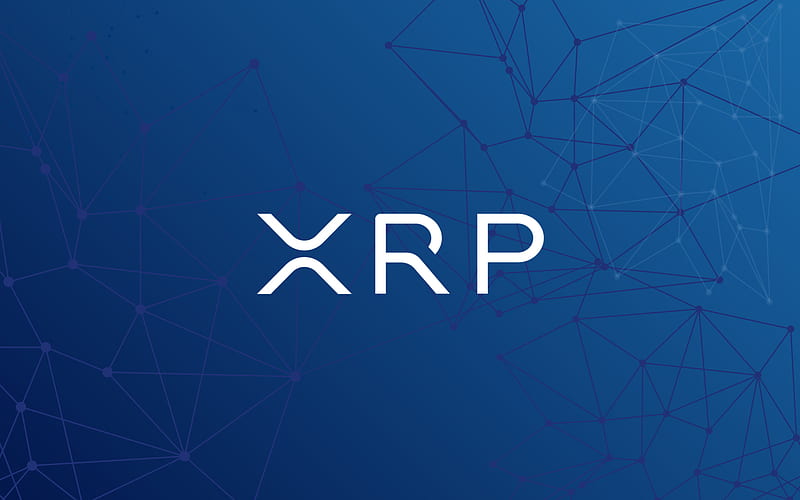As policymakers continue to shape their stablecoin plans, Finance Magnates London Summit panellists give a preview of their discussion on financial services use cases and outline some of the challenges to broader retail adoption.
The panel on “Stablecoins for a Destabilized World: Use Cases in Financial Services” will feature Jas Shah, Product Strategist and Advisor, Independent; Luke Dorney, Head of Custody, LMAX Group; Andrew Rosoman, International Head of Business Development, Ripple Prime; Harpal Sandhu, CEO, Integral; and Melissa Stringer, Fractional CPO and Product Strategy, Consultant.
Digital
assets meet tradfi in London at the fmls25
The Bank of England’s consultation on regulating systemic stablecoins is the latest step in the progress of these pegged cryptocurrencies. As with any asset, it is important to understand not only where it fits into the financial services sector now, but also what the next stage will look like.
“Cutting 60–80% of Correspondent Banking Costs”
Fractional CPO and product strategy consultant Melissa Stringer – who will moderate the ‘Stablecoins for a Destabilised World: Use Cases in Financial Services’ session at FMLS on 26 November – says the most useful use cases are in cross-border B2B payments and treasury settlement.
“Institutional payment providers are already using stablecoins as a back-end settlement layer, keeping existing client interfaces while cutting 60–80% of correspondent banking costs and compressing settlement times from days to under an hour,” she explains.
A strong emerging model is hybrid settlement: conventional FX on the front end with stablecoin rails underneath. This model preserves regulatory controls while enabling 24/7 liquidity.
“Another area is programmable trade finance, payments that release automatically when verified conditions are met (for instance, a shipment clearing customs),” adds Stringer. “That turns week-long processes into hours and removes most manual checks.”
Luke Dorney, head of custody at LMAX Group and session panellist, agrees that outside the native crypto space, the most important real-world use for stablecoins is in cross-border payments and remittances, where they are increasingly being explored for corporate treasury management and as programmable money through smart contracts to automate complex financial transactions.
“For institutional FX markets, stablecoins are expected to drive growth in 24/7 trading and reduce counterparty and settlement risk,” he says. “But this shift needs strong infrastructure, clear execution and global regulatory alignment.”
“The First Is Institutional Settlement and Treasury Rails”
Another session participant, Andrew Rosoman, head of business development at Hidden Road, points to three main use cases.
“The first is institutional settlement and treasury rails,” he explains. “Fiat-backed stablecoins are a 24/7 settlement asset useful for moving collateral between venues, funding accounts across time zones and reducing counterparty and operational risk in post-trade workflows.”
On exchanges and OTC, stablecoins act as a near-cash margin asset, speeding capital rotation and allowing tighter funding windows.
“In cross-border payments and FX, for B2B flows stablecoins cut friction compared to older correspondent banking systems, offering faster finality and clear fees,” adds Rosoman, who suggests that the main challenges to broader retail adoption include on/off-ramp user experience and protections; standardisation and fragmentation; and trust and education.
“In the medium term, stablecoins will influence treasury upgrades for corporates and institutions, supporting always-on cash management, instant internal transfers and programmable payouts,” he says. “Stablecoins also have a part to play as the ‘cash leg’ for tokenised assets and collateral movement across venues, as well as for remittances, merchant settlement and embedded finance where speed and certainty matter more than yield.”
The main obstacles to broader retail adoption are perception and integration rather than technology, says Stringer.
“Retail investors still mix up regulated, asset-backed stablecoins (USDC, PYUSD) with failed algorithmic models like UST,” she says. “Also, the user experience must improve – consumers should not need to manage private keys. Banks and brokers need to include stablecoin functions directly in their existing apps, giving simple on-/off-ramps.”
Stringer highlights three areas where stablecoins will have the greatest effect in the short to medium term:
• Liquidity management – freeing trapped working capital by removing the need for pre-funded nostro/vostro accounts
• Cross-border payroll and remittances – especially in emerging markets, where mobile wallets plus stablecoins can avoid costly correspondent networks
• Supply chain finance – conditional payments that settle at once once checks pass, directly helping with the trade finance gap
The past lack of regulatory clarity remains a major block, although regulatory progress has now become real frameworks that will help the market grow while protecting consumers and supporting innovation.
“Clarity Is Also Still Needed on Systemic Risk Management”
“Other practical issues include the lack of simple on- and off-ramps for converting stablecoins to local currency, which can be costly and inconvenient, and the fact that regulatory frameworks (like the GENIUS Act) often stop stablecoins from offering yield, making them less competitive as a savings or investment tool compared to standard interest-bearing accounts and money market funds,” says Dorney.
He says the GENIUS Act and the MiCA framework are allowing major institutions to use stablecoins for real-time settlement of tokenised assets, more efficient cross-border settlement and managing on-chain liquidity.
“Their role in cross-border payments and remittances will keep expanding fast, cutting costs and boosting efficiency for both individuals and businesses,” adds Dorney, while noting that a lot of work is still needed to reach simple, global usability.
“Clarity is also still needed on systemic risk management, including the possibility of non-bank issuers accessing central bank services to manage liquidity and prevent runs, as well as the creation of specific legal structures to cover the on-chain issue and trading of tokenised securities like ETFs under existing laws,” he continues.
With MiCA, FSMA and the GENIUS Act setting reserve, custody and disclosure standards, Stringer says the remaining task is cross-border alignment – how capital rules, yield-bearing tokens and collateral treatment match across regions.
“The key point here is that regulators have said ‘yes’ to stablecoins,” she notes. “Now the industry must put this into practice. The next 18–24 months are a major chance for regulated institutions to lead before new players set the norms. Stablecoins will not replace standard finance, they will support it. The winners will be payment providers and banks that improve their infrastructure to become the institutional on/off-ramps of the stablecoin period.”
Rosoman notes that work is still needed to set clear rules on reserve makeup, segregation, audits and real-time disclosures, as well as addressing enforceable, same-day (or near-instant) redemption expectations and clarifying which regulator is responsible.
Guidance on how stablecoins link with banks, payment firms and market venues – including capital and risk treatment for intermediaries – will also matter.
“Stablecoins are becoming core market plumbing,” concludes Rosoman. “The more aligned the rules and the better the disclosures, the faster responsible adoption will grow.”
As policymakers continue to shape their stablecoin plans, Finance Magnates London Summit panellists give a preview of their discussion on financial services use cases and outline some of the challenges to broader retail adoption.
The panel on “Stablecoins for a Destabilized World: Use Cases in Financial Services” will feature Jas Shah, Product Strategist and Advisor, Independent; Luke Dorney, Head of Custody, LMAX Group; Andrew Rosoman, International Head of Business Development, Ripple Prime; Harpal Sandhu, CEO, Integral; and Melissa Stringer, Fractional CPO and Product Strategy, Consultant.
Digital
assets meet tradfi in London at the fmls25
The Bank of England’s consultation on regulating systemic stablecoins is the latest step in the progress of these pegged cryptocurrencies. As with any asset, it is important to understand not only where it fits into the financial services sector now, but also what the next stage will look like.
“Cutting 60–80% of Correspondent Banking Costs”
Fractional CPO and product strategy consultant Melissa Stringer – who will moderate the ‘Stablecoins for a Destabilised World: Use Cases in Financial Services’ session at FMLS on 26 November – says the most useful use cases are in cross-border B2B payments and treasury settlement.
“Institutional payment providers are already using stablecoins as a back-end settlement layer, keeping existing client interfaces while cutting 60–80% of correspondent banking costs and compressing settlement times from days to under an hour,” she explains.
A strong emerging model is hybrid settlement: conventional FX on the front end with stablecoin rails underneath. This model preserves regulatory controls while enabling 24/7 liquidity.
“Another area is programmable trade finance, payments that release automatically when verified conditions are met (for instance, a shipment clearing customs),” adds Stringer. “That turns week-long processes into hours and removes most manual checks.”
Luke Dorney, head of custody at LMAX Group and session panellist, agrees that outside the native crypto space, the most important real-world use for stablecoins is in cross-border payments and remittances, where they are increasingly being explored for corporate treasury management and as programmable money through smart contracts to automate complex financial transactions.
“For institutional FX markets, stablecoins are expected to drive growth in 24/7 trading and reduce counterparty and settlement risk,” he says. “But this shift needs strong infrastructure, clear execution and global regulatory alignment.”
“The First Is Institutional Settlement and Treasury Rails”
Another session participant, Andrew Rosoman, head of business development at Hidden Road, points to three main use cases.
“The first is institutional settlement and treasury rails,” he explains. “Fiat-backed stablecoins are a 24/7 settlement asset useful for moving collateral between venues, funding accounts across time zones and reducing counterparty and operational risk in post-trade workflows.”
On exchanges and OTC, stablecoins act as a near-cash margin asset, speeding capital rotation and allowing tighter funding windows.
“In cross-border payments and FX, for B2B flows stablecoins cut friction compared to older correspondent banking systems, offering faster finality and clear fees,” adds Rosoman, who suggests that the main challenges to broader retail adoption include on/off-ramp user experience and protections; standardisation and fragmentation; and trust and education.
“In the medium term, stablecoins will influence treasury upgrades for corporates and institutions, supporting always-on cash management, instant internal transfers and programmable payouts,” he says. “Stablecoins also have a part to play as the ‘cash leg’ for tokenised assets and collateral movement across venues, as well as for remittances, merchant settlement and embedded finance where speed and certainty matter more than yield.”
The main obstacles to broader retail adoption are perception and integration rather than technology, says Stringer.
“Retail investors still mix up regulated, asset-backed stablecoins (USDC, PYUSD) with failed algorithmic models like UST,” she says. “Also, the user experience must improve – consumers should not need to manage private keys. Banks and brokers need to include stablecoin functions directly in their existing apps, giving simple on-/off-ramps.”
Stringer highlights three areas where stablecoins will have the greatest effect in the short to medium term:
• Liquidity management – freeing trapped working capital by removing the need for pre-funded nostro/vostro accounts
• Cross-border payroll and remittances – especially in emerging markets, where mobile wallets plus stablecoins can avoid costly correspondent networks
• Supply chain finance – conditional payments that settle at once once checks pass, directly helping with the trade finance gap
The past lack of regulatory clarity remains a major block, although regulatory progress has now become real frameworks that will help the market grow while protecting consumers and supporting innovation.
“Clarity Is Also Still Needed on Systemic Risk Management”
“Other practical issues include the lack of simple on- and off-ramps for converting stablecoins to local currency, which can be costly and inconvenient, and the fact that regulatory frameworks (like the GENIUS Act) often stop stablecoins from offering yield, making them less competitive as a savings or investment tool compared to standard interest-bearing accounts and money market funds,” says Dorney.
He says the GENIUS Act and the MiCA framework are allowing major institutions to use stablecoins for real-time settlement of tokenised assets, more efficient cross-border settlement and managing on-chain liquidity.
“Their role in cross-border payments and remittances will keep expanding fast, cutting costs and boosting efficiency for both individuals and businesses,” adds Dorney, while noting that a lot of work is still needed to reach simple, global usability.
“Clarity is also still needed on systemic risk management, including the possibility of non-bank issuers accessing central bank services to manage liquidity and prevent runs, as well as the creation of specific legal structures to cover the on-chain issue and trading of tokenised securities like ETFs under existing laws,” he continues.
With MiCA, FSMA and the GENIUS Act setting reserve, custody and disclosure standards, Stringer says the remaining task is cross-border alignment – how capital rules, yield-bearing tokens and collateral treatment match across regions.
“The key point here is that regulators have said ‘yes’ to stablecoins,” she notes. “Now the industry must put this into practice. The next 18–24 months are a major chance for regulated institutions to lead before new players set the norms. Stablecoins will not replace standard finance, they will support it. The winners will be payment providers and banks that improve their infrastructure to become the institutional on/off-ramps of the stablecoin period.”
Rosoman notes that work is still needed to set clear rules on reserve makeup, segregation, audits and real-time disclosures, as well as addressing enforceable, same-day (or near-instant) redemption expectations and clarifying which regulator is responsible.
Guidance on how stablecoins link with banks, payment firms and market venues – including capital and risk treatment for intermediaries – will also matter.
“Stablecoins are becoming core market plumbing,” concludes Rosoman. “The more aligned the rules and the better the disclosures, the faster responsible adoption will grow.”

























